Home Rigs of the Stars: What Do Guitar Heroes Play When They’re Off the Clock?
John Petrucci, Paul Gilbert, Sonny Landreth, and five other axe slingers reveal the gear they use every day.
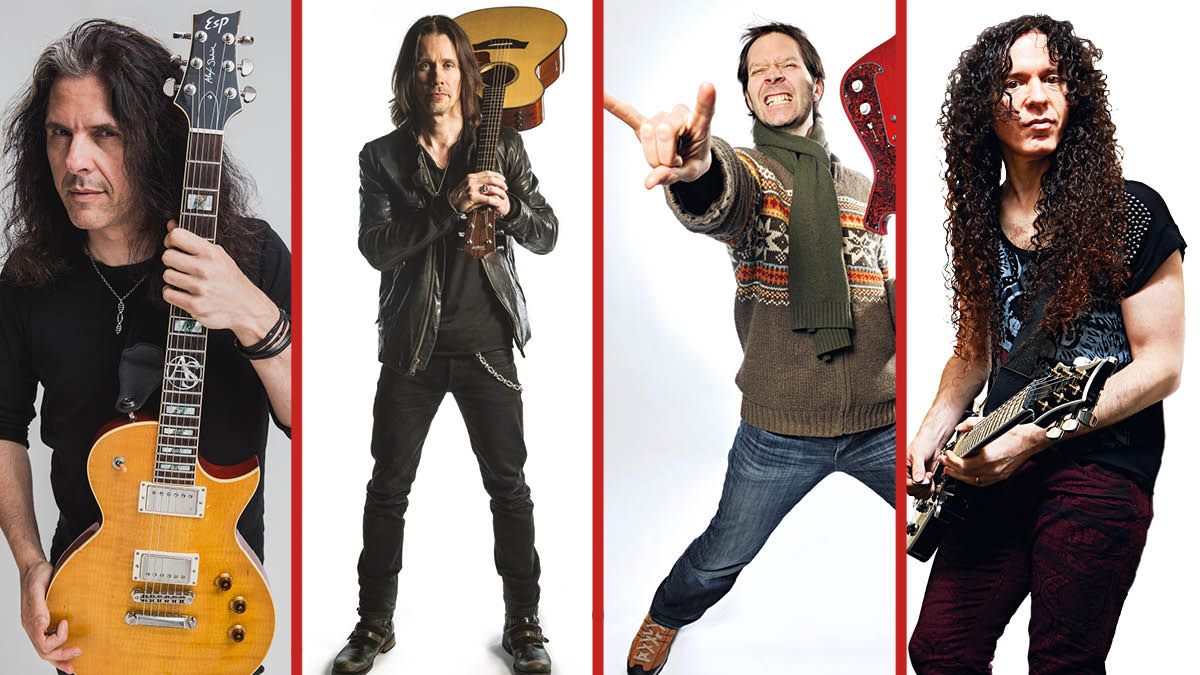
COVID-19, for well over a year, did away with live music in most of the world. Confined mostly to their homes, guitarists came to lean on their home setups as not just a useful tool, but an absolute necessity for recording, writing, demoing, teaching, learning, and streaming during pandemic times.
With that in mind, a few months ago, we contacted eight guitar heroes from the worlds of blues, jazz, metal, prog, and more and asked them about their home rigs – what's in them, how they use them, and how they want to improve them.
Alex Skolnick
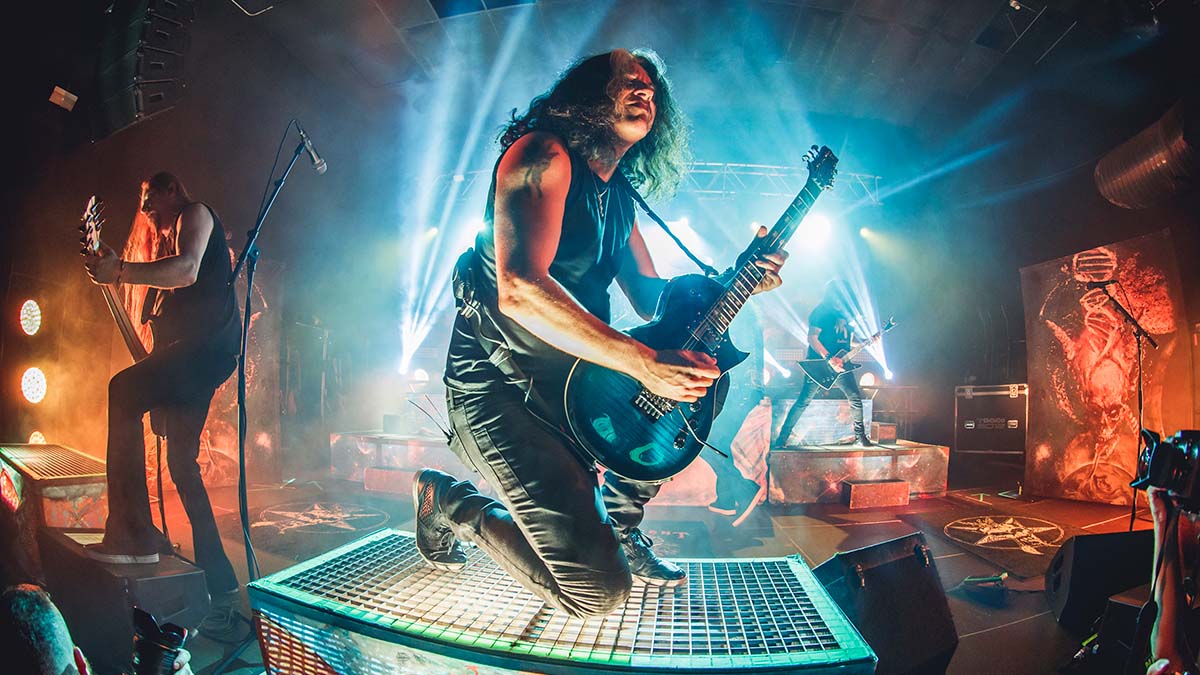
He's played with thrash-metal titans Testament and the jazz-leaning Alex Skolnick Trio, but he’s also led the acoustic-based Alex Skolnick’s Planetary Coalition of artists from around the world and has his own podcast, Moods & Modes.
The Brooklyn-based musician took us inside his home studio, which is always primed for those moments when inspiration strikes.
What’s your home rig’s main purpose?
Mainly recording and songwriting. For woodshedding, I’ll usually just play through an amp or acoustically. If inspiration strikes, I’ll hit “record” on the iPhone or Zoom H8 MP3 recorder.
What’s in it?
All the latest guitar news, interviews, lessons, reviews, deals and more, direct to your inbox!
• Recording: Apple MacBook Pro OS Catalina running Logic ProX 10.6.2, with an IK Multimedia Axe I/O interface and iLoud speakers, and a Fishman Platinum Pro EQ/DI analog preamp for acoustic guitar with pickup and electric bass
• Electric guitar tone options: Kemper Profiler, IK Multimedia AmpliTube 5. Zoom G11 multieffects processor, mic’d Fender 1960 Super and Fender 1968 “drip edge” Vibrolux
• Mics: Shure SM57, Sennheiser MD 421, Studio Projects C1 (vocals and acoustic guitar without pickup), Røde Procaster (for podcasting)
• Other: TC Electronic 2290 digital delay, Alesis V49 keyboard/MIDI controller, Toontrack Superior Drummer 3 software
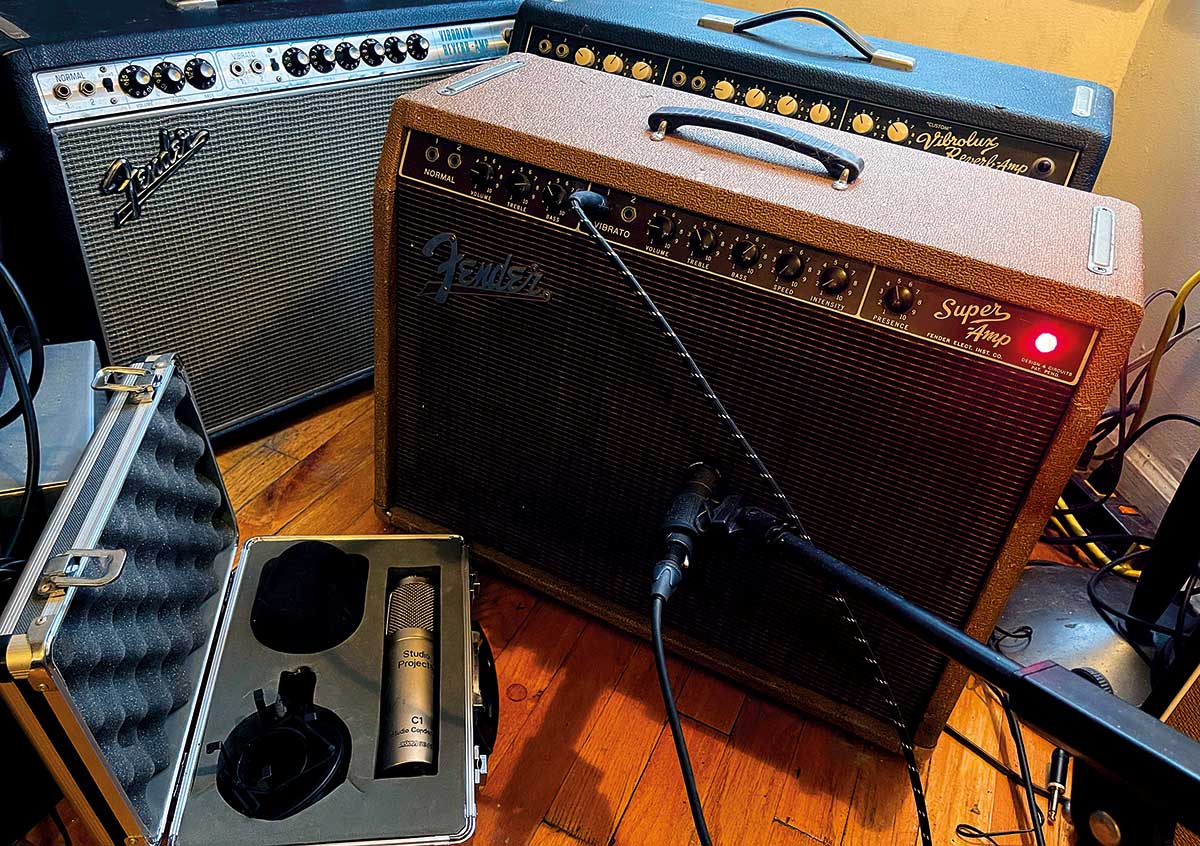
How did you come to choose this gear?
I had a ProTools rig for a number of years. I found it was hard to keep up with the updates, and whenever I’d get a new computer, it was complete disruption.
Once I tried Logic Pro, I liked the feel. It has a user-friendly quality, similar to Garage Band, but on the same professional level of ProTools. I also didn’t have the disruption I’d had before, since it’s an Apple product.
IK Multimedia has been very supportive, having me design a series of presets for AmpliTube 5, which is really “next level.” I have a few interfaces, all good, but their Axe I/O has noticeable quality, and the IK Multimedia Z-Tone DI helps dial in the signal.
I’ve developed an addiction to the Kemper. I know it well, and when I need a sound, I know how to find it
Alex Skolnick
The Kemper unit is something that Testament adopted for live shows, encouraged by our sound engineer for its consistency. Since there’s a learning curve, I was a bit reliant on my tech and just thought of it as my live rig for metal sounds. Yet once I took it home and found my away around it, I was shocked at all the options, tone-wise and effects-wise.
I’ve used it on the majority of “quarantine video” tracks in 2020 and 2021. All the other gear was either acquired over the years, received through a recommendation, or sent for me to try out and approved.
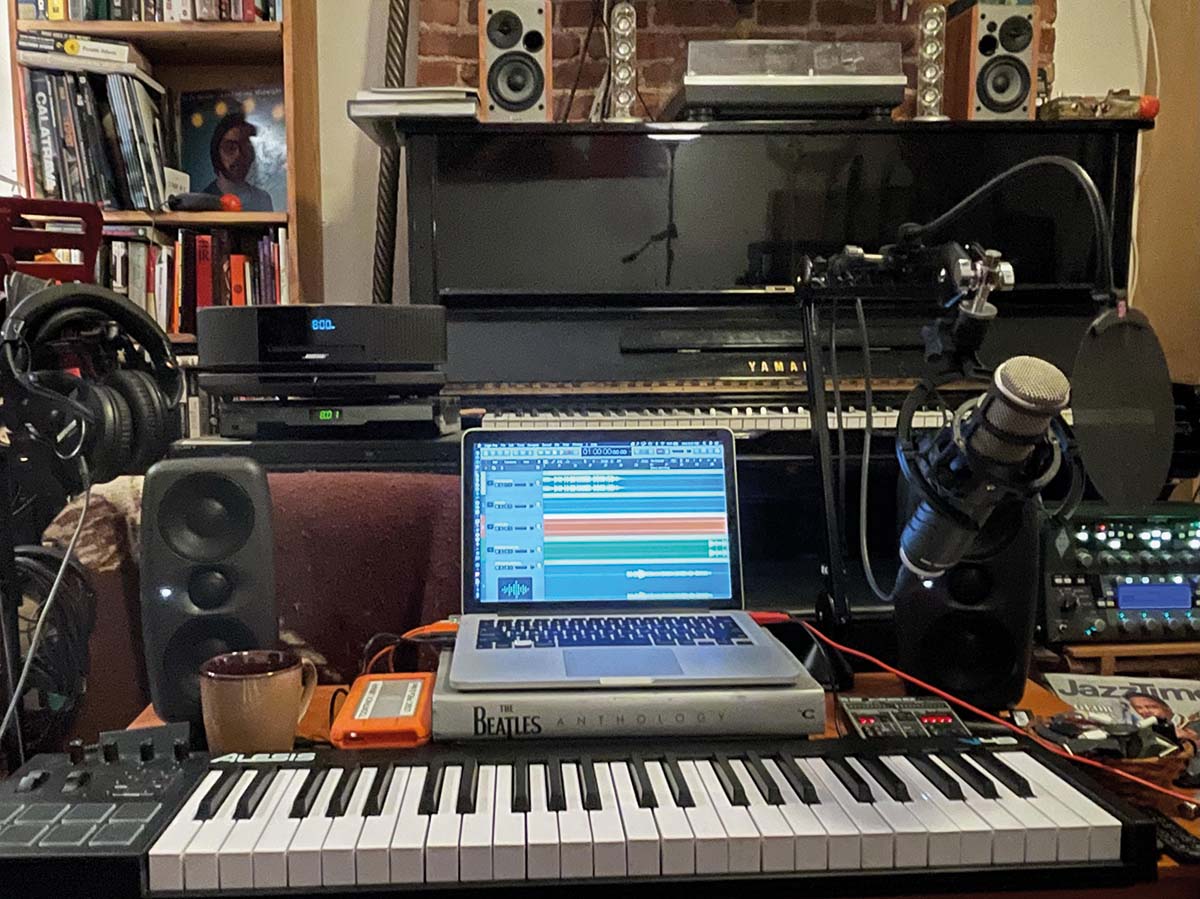
Do you have a favorite piece of gear?
I’ve developed an addiction to the Kemper. I know it well, and when I need a sound, I know how to find it.
What’s the best thing about your setup?
My system is organized in a way that makes it relatively easy for me to switch in and out of different projects with minimal distraction.
What would you like to change or add to it?
I’m getting to the point where I really need to upgrade my machine. Some of my recent projects have been very dense. They’ve included a full drum kit (rather than all the drums bounced), and projects with 10 or more musicians. I own a condo in Brooklyn and one of the trade-offs of living in the city is less space, hence my sticking with a laptop. But I feel a desktop beckoning.
Richie Kotzen
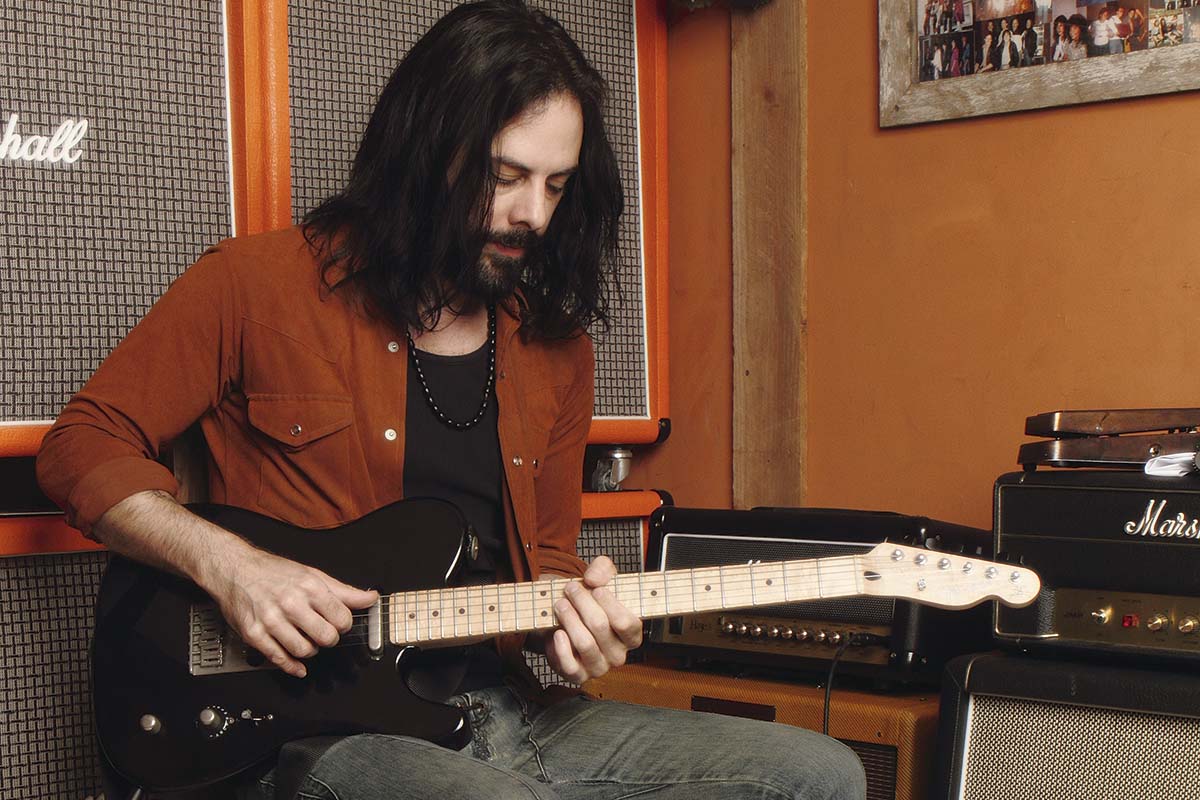
In addition to being a monster guitar player, Richie Kotzen is a prodigious songwriter. Beyond serving as the primary songwriter during his stints with Mr. Big and Poison, he’s released more than 20 solo albums – including 2020’s 50 for 50 set, which celebrated his 50th birthday – as well as a trio of discs with the Winery Dogs. As he reveals below, his home rig is rarely ever turned off.
What’s your home rig’s main purpose?
To make my records and occasionally record other folks. Although my setup has been relocated on three separate occasions, the actual gear has been used to record most of my music, including the Mr. Big album Actual Size, as well as both Winery Dog albums and 50 for 50.
When it was out of my home, it was part of a public recording studio I used to own called Headroom. Gene Simmons, among other well-respected folks, recorded there. Since then, I moved the gear back into my home and trimmed down some of the components I found unnecessary for my own personal use.
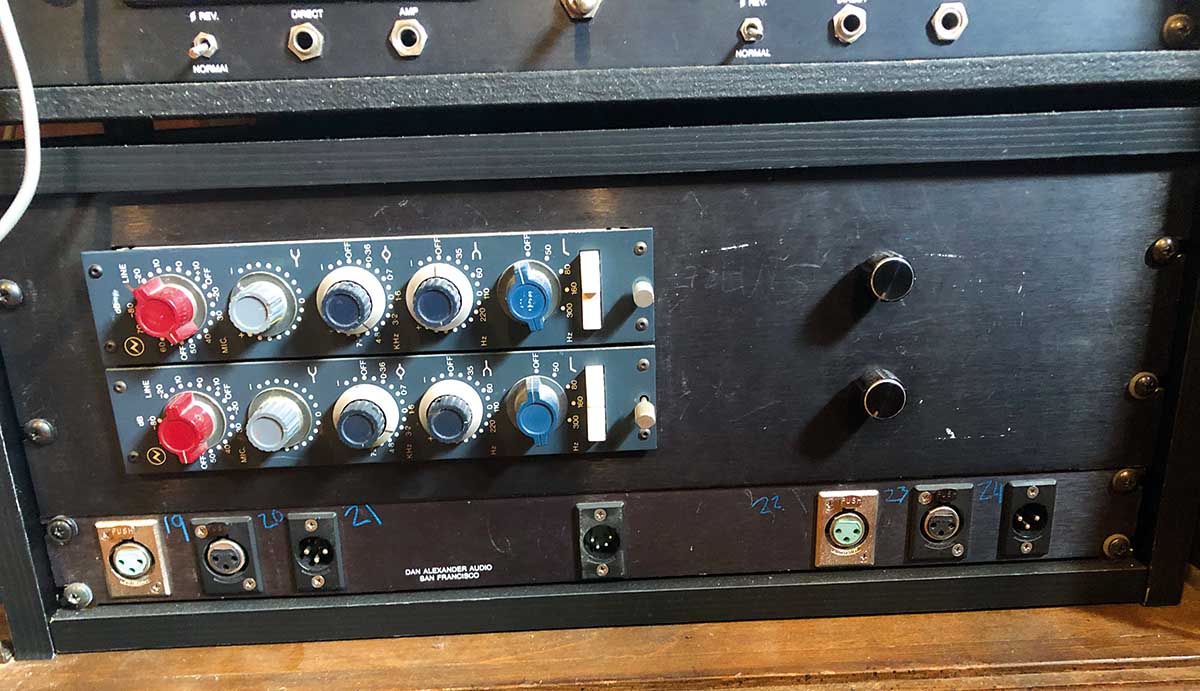
What’s in it?
As far as gear, I’ve got preamps and various compressors from Manley, API, Neve, Focusrite, and ADL, to name a few. I’ve got some vintage Neumann and AKG microphones as well.
I don’t really use much EQ when I record, because for me it’s primarily about the microphone placement, and the preamp and compression. Of course, using Neve or API preamps plays a major role in making it easier to get tone. My favorite compressor is my Anthony DeMaria Labs C/L 1000 or the 1500 if I’m recording something in stereo.
I don’t really use much EQ when I record, because for me it’s primarily about the microphone placement, and the preamp and compression
Richie Kotzen
How did you come to choose this gear?
I started making records at a very young age and I was always curious why recording engineers would select specific gear for certain recording applications. I would always ask questions, so I learned very quickly what I liked, and that’s what I went out and bought when I put together my recording setup many years ago.
In earlier times, I had an MCI 24-track machine with 16-track heads on it. It sounded great, but it was a pain in the ass to deal with. Once Pro Tools came out, I switched over and never looked back.
Do you have a favorite piece?
My pair of vintage Neve 1073 mic preamps. These are the real deal, racked by Dan Alexander in San Francisco.
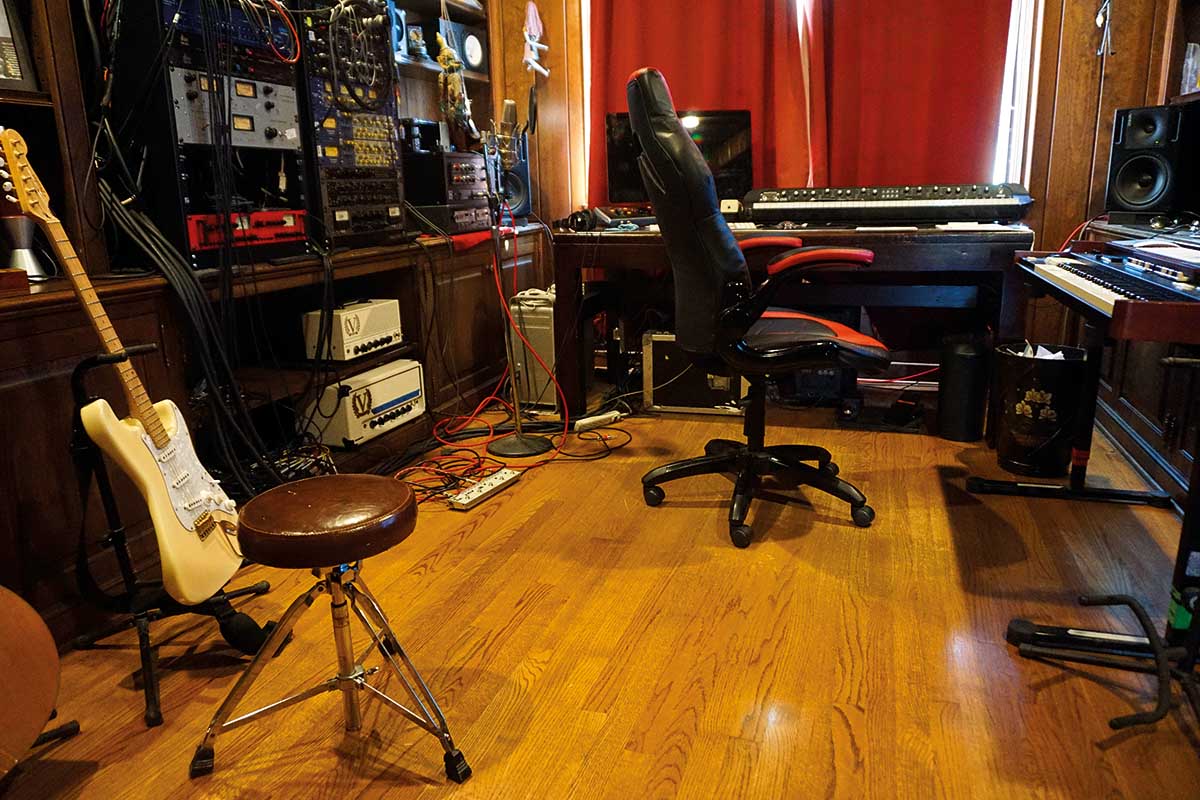
What’s the latest addition to your rig?
For my 50th birthday, Larry DiMarzio gave me an amazing preamp made by a company called Inward Connections. I believe the company goes under Tree Audio now. This thing sounds fantastic and is very similar to my API mic pre amps which I love.
What’s the best thing about your setup?
It’s designed for my style of recording and my needs. I usually end up playing everything myself on my records, and my setup is such that every instrument is always mic’d up and ready to go.
What would you like to change or add?
The drum live room is down a flight of stairs. To compensate for that, I have a large monitor in it and a keyboard with a mouse next to my drum set, which is tied into the control-room computer. It’s great because I can fully run my Pro Tools from behind the drums without having to run to the control room every time I want to fix or change something.
Paul Gilbert
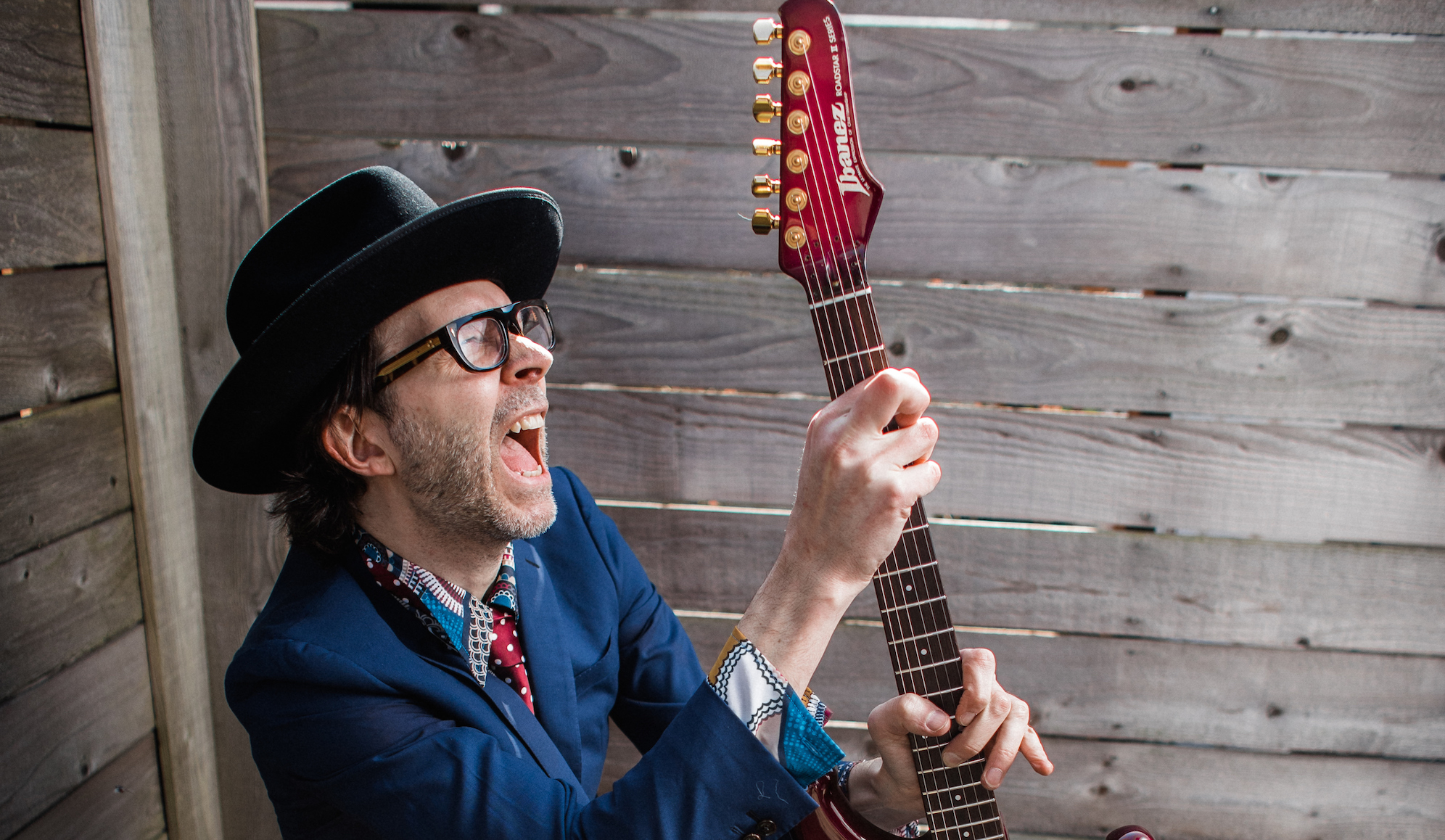
From his mid-1980s years with Racer X through his 1990s tenure with Mr. Big, Paul Gilbert established himself as one of the great guitar virtuosos of the era.
In addition to releasing his latest solo album, Werewolves of Portland, he’s continued to issue loads of video lessons for students of his online guitar school, all of which make steady use of his home rig. Paul eschewed our questionnaire to provide his own rig tour.
“I built a small pedalboard that I keep near my main computer desk. I use it to practice, write songs, do Zoom/Skype interviews, and record into Pro Tools. The selection of pedals changes sometimes, but my JHS PG-14 overdrive is usually front and center. The EarthQuaker Devices Dispatch Master is nice because I can get both reverb and delay without taking up a lot of space.
“The MXR Phase 100 makes me feel like Johnny Winter. And the Catalinbread Callisto chorus is for vintage Rush-style riffs. I send this into a Marshall JTM1C running clean. I keep my favorite Ibanez Fireman guitars nearby and my iPhone for recording song ideas quickly.
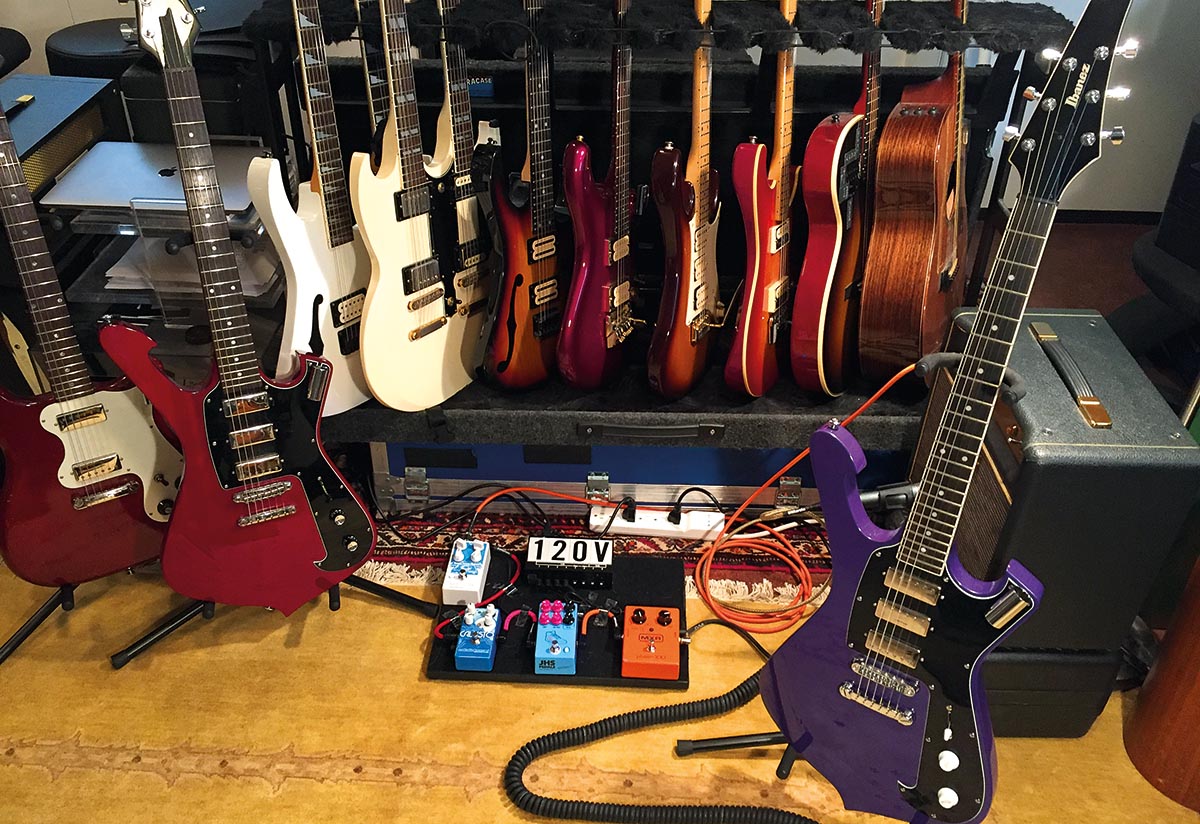
“On the other side of my desk, I keep a 1978 Ibanez Artist hollowbody. It’s loud enough acoustically that I can hear it without using an amp. So when I need to quickly figure out a song or try out an idea, this is the guitar I grab.
“In back of my desk is my Ibanez miKro double-neck and my cat. I think you can see why these are important. The other room in my studio is where I shoot videos for my online rock guitar school at Artistworks. Lately I’ve been running amps in stereo, as the TC Electronic Arena reverb, Alter Ego delay, and MXR Stereo Chorus all sound great with a stereo spread.
“I’ve got two Marshall Bluesbreaker combo amps. I love these amps, but when I’m sitting really close to the transformers, it creates some hum, so I’m actually using a Marshall JTM1C, and a Marshall JTM45 head (running into one of the speakers on the Bluesbreaker), both far enough away from me to prevent hum. I’ve got GIK acoustic panels covering most of the other walls to deaden the sound. This is really important to help keep things focused, especially in small rooms.
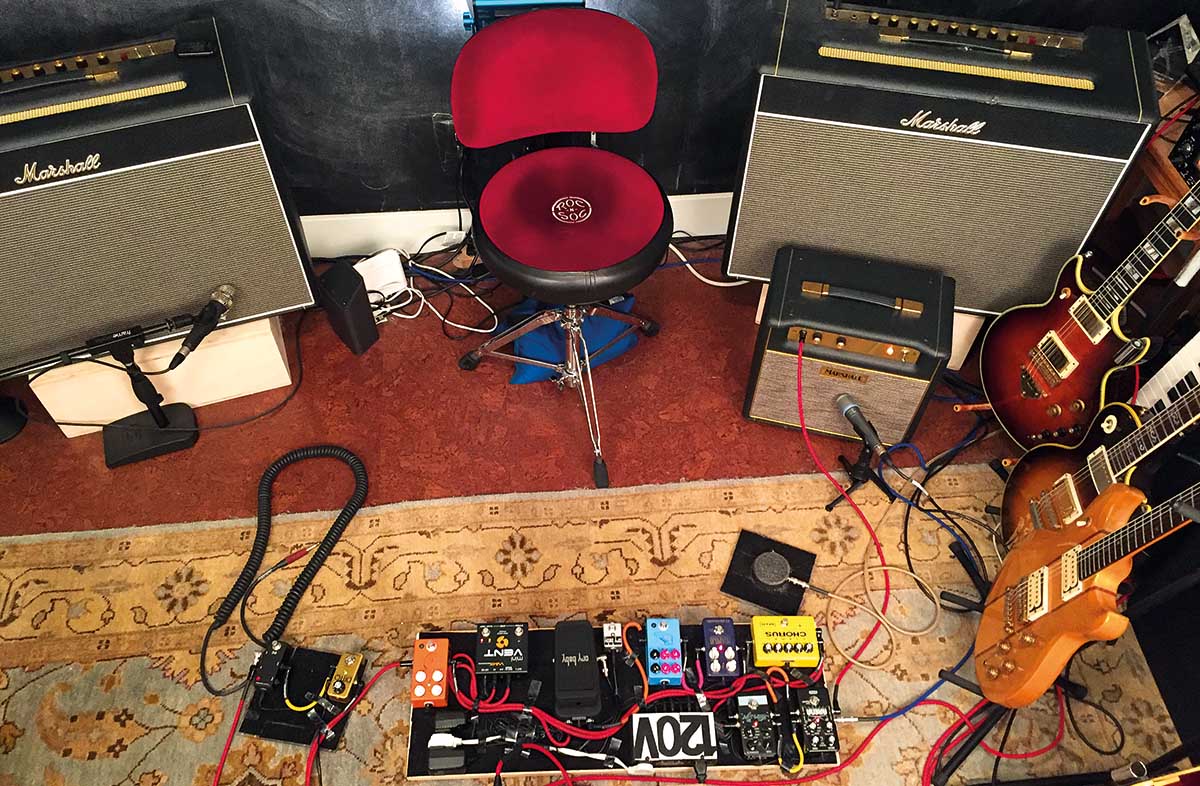
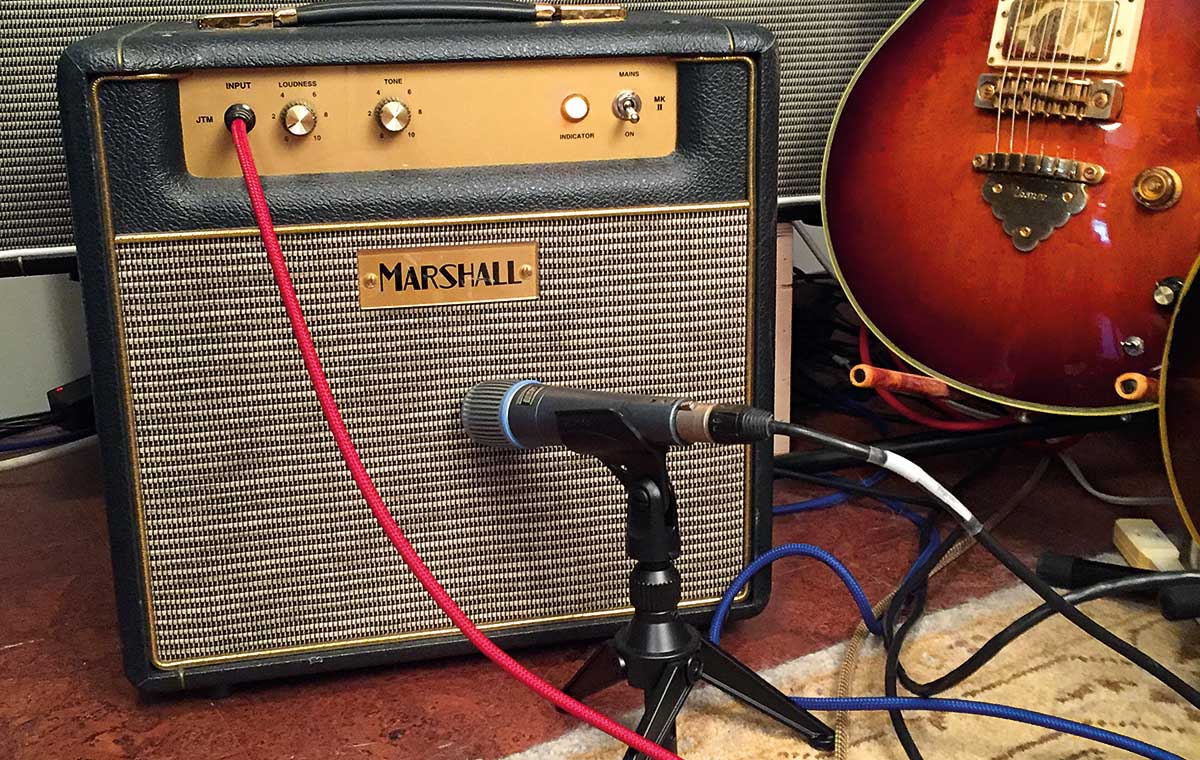
“I built a larger pedalboard for this room. My prototype signature MojoMojo overdrive by TC Electronic (same as the factory model, except it’s purple and has a switch that goes to 11) is on most of the time. I use the JHS PG-14 to add more sustain and to tailor the pick attack. I’ve been testing out an experimental Dunlop Cry Baby Junior wah-wah that has an external bypass switch.
“This switching system is a lot easier for me (especially sitting down), compared to the standard foot switch. The pedal that looks like a hockey puck is a Peterman Puck’N Stompa – a hockey puck, modified to sound like a bass drum, when you stomp on it. This plugs into my mixer and allows me to keep time with my left foot.
“Recently, I set up another small pedalboard for my TC Electronic Ditto Looper. I use the One Control 1 Loop Box as an A/B switcher. This sends my guitar to the Ditto Looper to record the audio loop. The Ditto goes out to a Roland Micro Cube amp. After the loop is recorded, I switch back to my main stereo Marshall rig for the solos.”
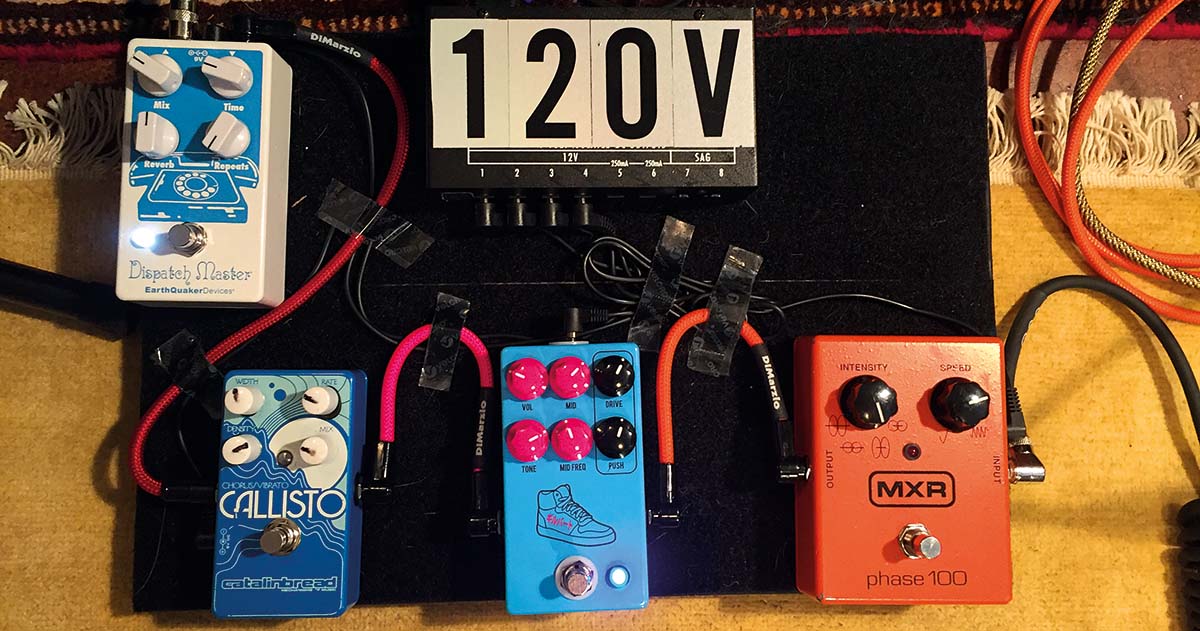
Myles Kennedy
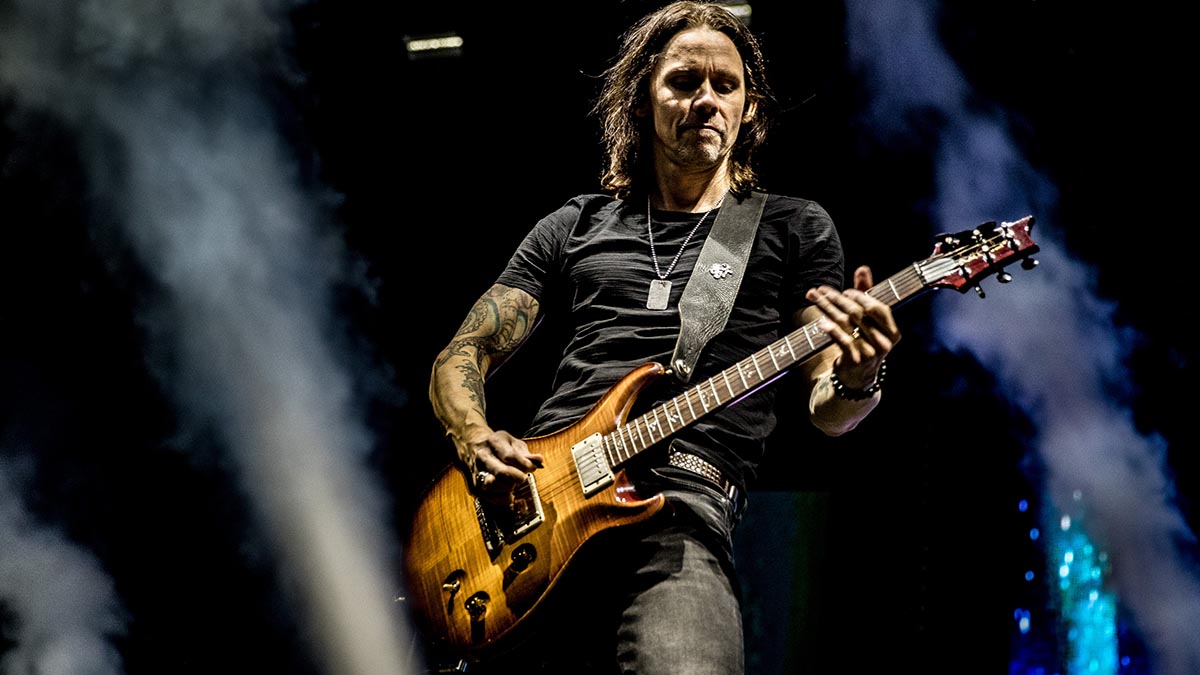
In a typical year, Myles Kennedy would have been busy in his roles as singer and guitarist for Alter Bridge and as vocalist for Slash’s backup band, Myles Kennedy and the Conspirators. But since lockdown, he’s had time to work in his home studio, where he created demos for his new solo album, The Ides of March.
What’s your home rig’s main purpose?
Woodshedding, songwriting, recording. I have two rigs placed strategically to keep me inspired no matter where I am.
What’s in them?
In my loud room, I have a Diezel Schmidt and Paul Amp into a 2x12 cabinet with Tone Tubby speakers. Sometimes, when I want a tweed vibe, I’ll plug into the ’58 Fender Deluxe.
In my writing/demo room, the main go-to is a Universal Audio Apollo x4 interface. I use the Diezel VH4 and ’55 Fender Deluxe amp plug-ins for late-night recording. I’ll fire up my ’53 Fender Super Amp when I want to play loud enough to freak out the neighborhood.
I’m going to have to build a studio outside of my living environment – a real man cave with tacky velvet Elvis posters, lava lamps, and assorted arcade games surrounding an API console
Myles Kennedy
How did you come to choose this gear?
I discovered Diezel amps while we were making the the second Alter Bridge record in 2007. I integrated their amps into my home rigs for writing in that realm, but for my solo material the older Fender tweeds hit the mark.
For demos, the Universal Audio interface can’t be beat. I started using it last year while writing The Ides of March. I retired most all of my outboard gear once I realized how effective the plug-ins are.
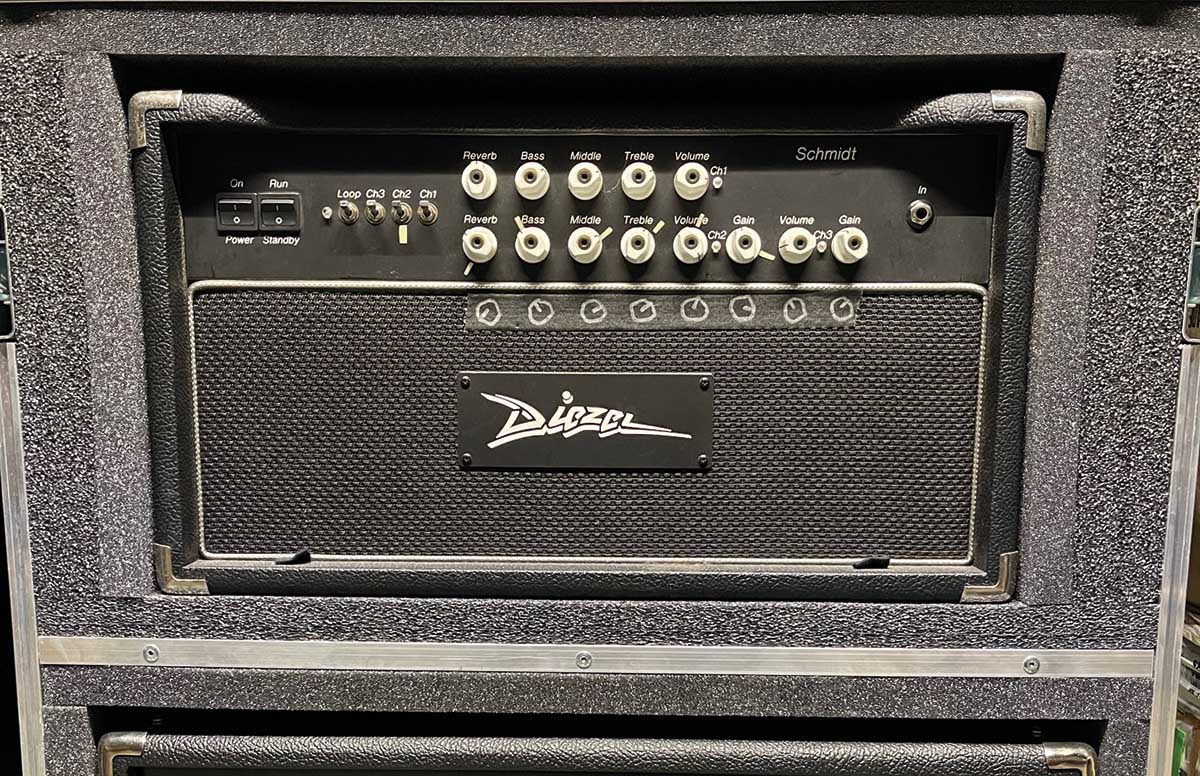
Do you have a favorite piece?
My ’58 Deluxe sounds stunningly good. I also love the Diezel Schmidt. It’s like a Vox AC30 on steroids.
What’s the latest addition?
PRS just sent me a prototype for a new take on a classic amp. It’s a beast. I wish I could tell you more.
What’s the best thing about your rig?
It’s relatively simple. I’m just trying to keep the tone intact without compromising it by using too many pedals before hitting the amp.
What would you like to change or add?
I think I’m going to have to build a studio outside of my living environment – a real man cave with tacky velvet Elvis posters, lava lamps, and assorted arcade games surrounding an API console.
How much use did it get this past year?
A ton. There was nothing else to do but write and play music. I haven’t been this productive in years.’
Ron 'Bumblefoot' Thal
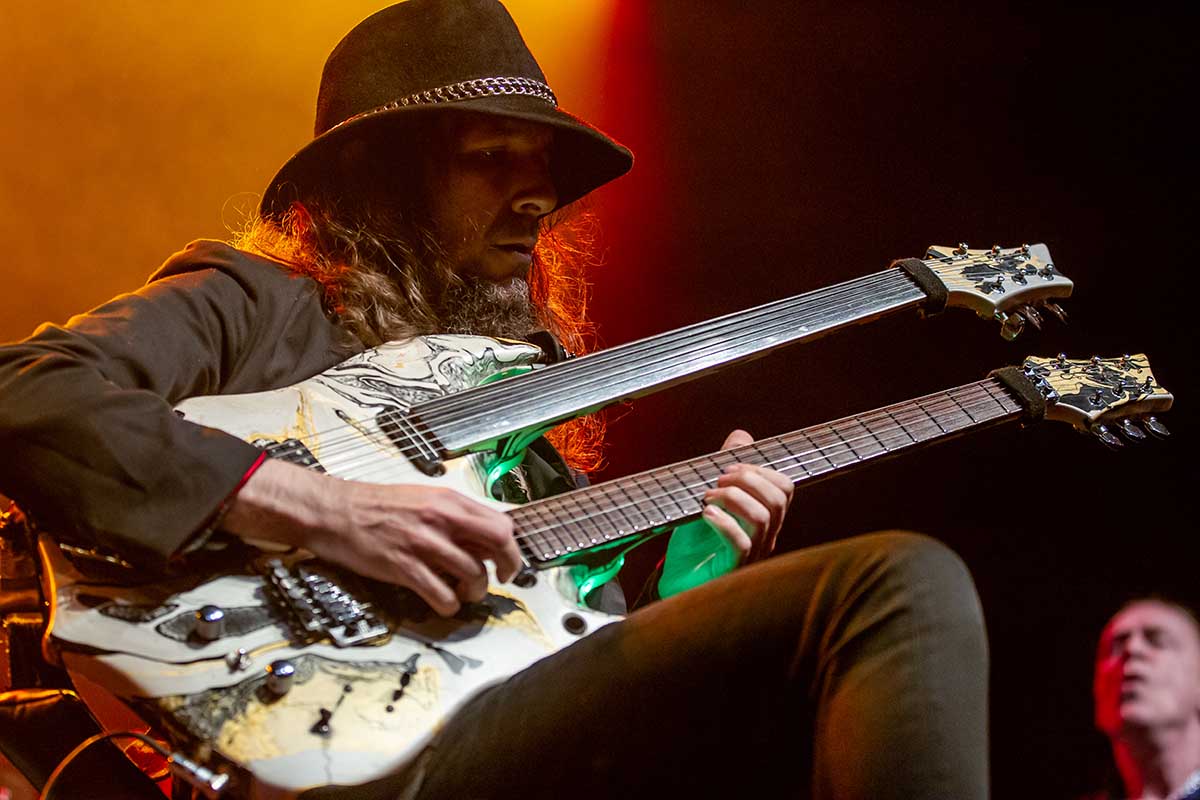
Beyond his high-profile stint with Guns N’ Roses from 2006 to 2014, Ron “Bumblefoot” Thal has distinguished himself in the hard-rock supergroups Art of Anarchy and Sons of Apollo, and in his lengthy and diverse solo career.
In addition, he writes TV jingles, theme songs, and background music. Needless to say, this mad professor’s home lab gets regular use.
What’s your home rig’s main purpose?
Mostly songwriting and recording, but also plenty of mixing and mastering, teaching – all things music. It’s a second house I got about 20 years ago for the purpose of having a studio where artists could stay while they work, and I’ve made great use of it over the years.
It’s an unusual studio. It has a Swiss Cheese room (to match my old Swiss Cheese guitar) with 3-D holes in the walls, and a big yard that grows berries every summer.
What’s in the studio?
I have some nice outboard gear but have slowly become in-the-box, which allows me to work from other locations. At the studio, it’s a PC with Steinberg Cubase and WaveLab. I have a lot of audio interfaces – Prism Orpheus, IK Multimedia Axe I/O – but I mainly use a Focusrite 18i8 linked to a Focusrite 18i20 (both 3rd-gen) when doing live drums.
On the road, I bring a Focusrite 2i2 and a PC laptop with Cubase and WaveLab. I have lots of Shure and Sennheiser dynamic mics, Audio-Technica and AKG condenser mics, Cascade ribbon mics, lots of Line 6 Vetta heads and Engl heads, an old Marshall head, Engl and Marshall cabinets, TC Electronic stompboxes, and lots of custom effects – a Morley switchless wah, a G7th capo, glass and metal slides, thimbles... and a kazoo! Plus Vigier electric guitars and Cort acoustic guitars all over the place.
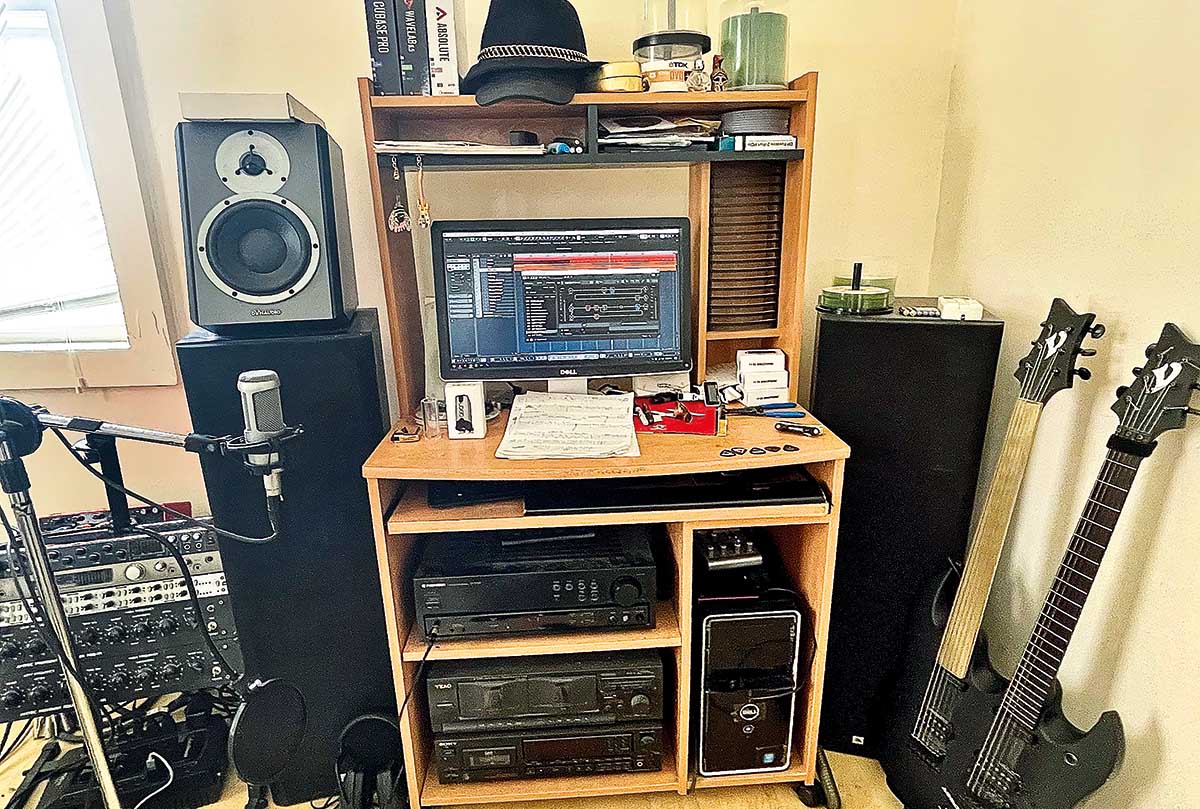
How did you come to choose this gear?
The equipment built up over decades of recording and touring. There are many memories and events connected to every piece of gear.
Do you have a favorite piece?
That would have to be the Vigier signature series DoubleBfoot fretted/fretless double-neck guitar. That’s my main piece of gear. Next in line is the Line 6 Helix Native plug-in. I get every possible guitar tone I could imagine, and it adds so much to the writing and production. The song “Planetary Lockdown” that I released last year wouldn’t have happened if not for the features in the Helix.
What’s the latest addition to your rig?
TC Electronic makes a hand-held string sustainer called Aeon. I’ve been using that a ton with the fretless, and I love it!
What’s the best thing about your setup?
The drum room. It’s 11-by-22, with nine-foot walls and a ceiling that slopes up to 15 feet. It’s a loud room and gets great reflections that bring the drums to life. Lots of tone and energy. You can’t fake that with artificial reverb on close mics. You need the full reflections.
What would you like to change or add?
I’d like to remove gear that I no longer use and find a home for them where they’ll be used and not collect dust.
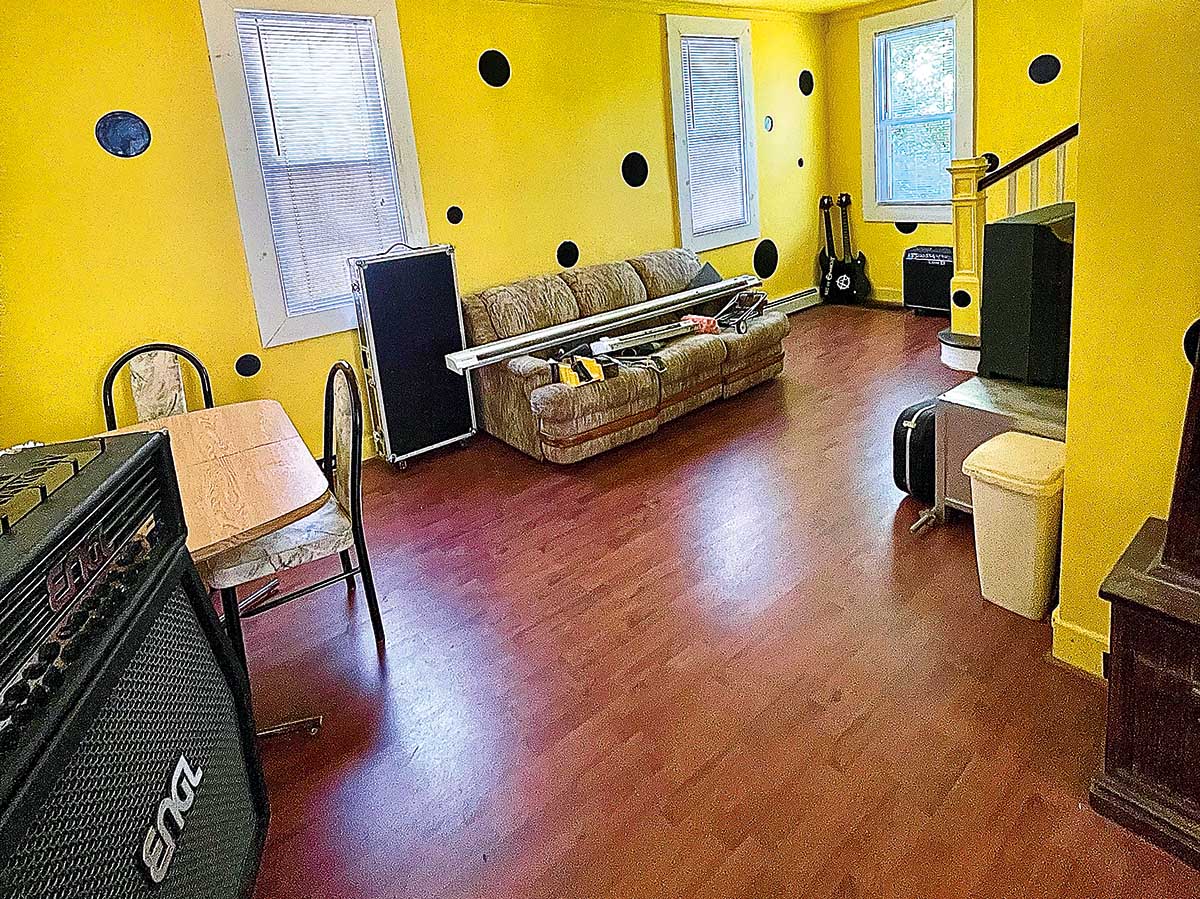
John Petrucci
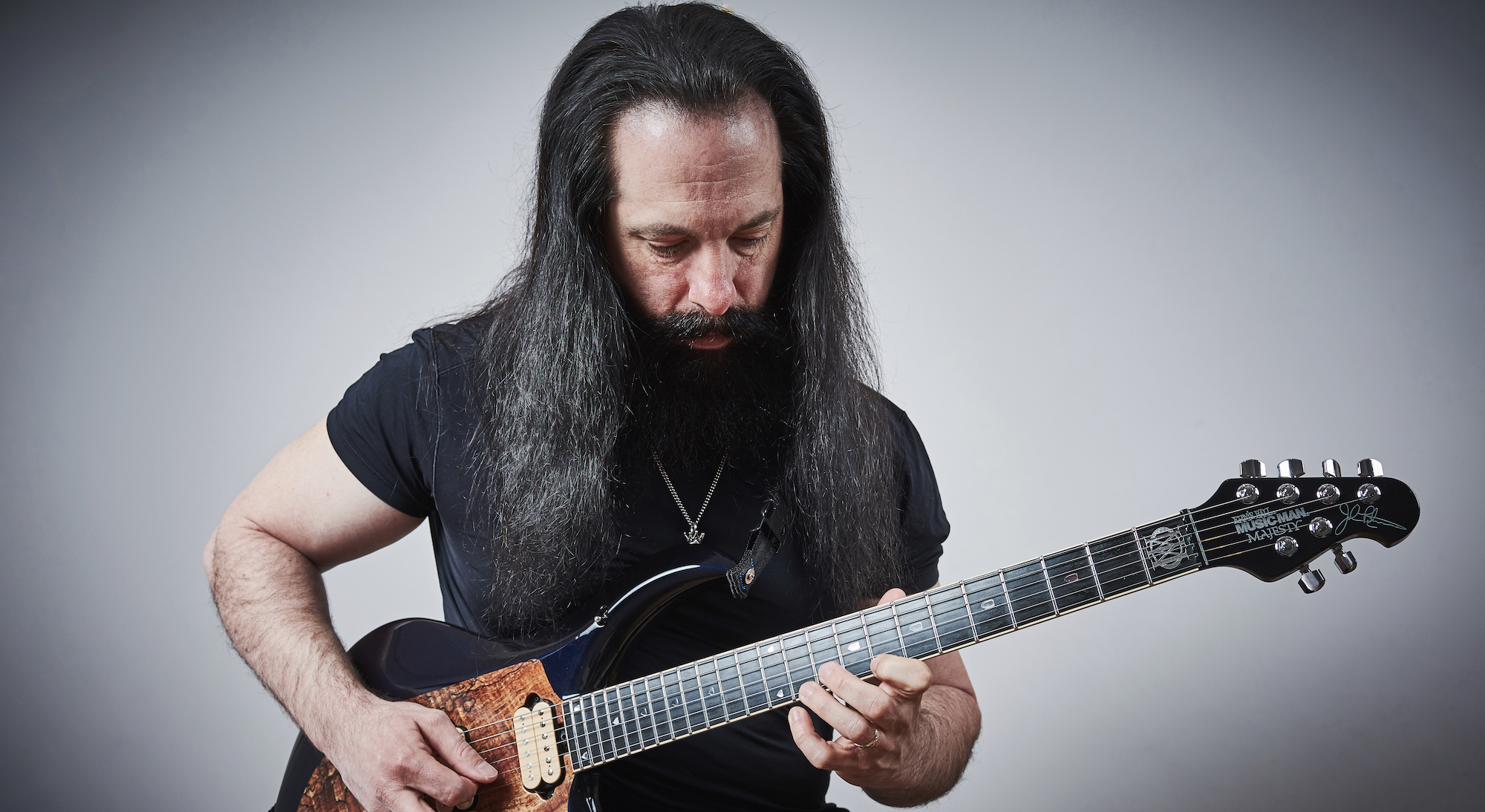
As Dream Theater’s virtuoso guitarist, John Petrucci is one of rock and progressive metal’s most inspiring axe men. Beyond his own recent solo disc and a new one from Liquid Tension Experiment, he’s been at work on Dream Theater’s next album.
Given his busy schedule, it’s small wonder his “home” rig is a fully outfitted studio a mere 20-minute drive from his house.
What’s your rig’s main purpose?
Writing, recording, and producing records as well as rehearsing, press, promotion, and so on.
What’s in it?
• Guitars and amps: Ernie Ball Music Man John Petrucci Majesty guitars, Mesa/Boogie John Petrucci JP-2C amplifiers
• Recording: Pro Tools, RND Shelford channels, and RND 5024, RND D8 and Black Lion Audio B12 preamps
• Monitors: KRK V8, Adam A7X, Ex Machina Quasar, sE Electronics Munro Egg
• Mics: Mojave 301, Royer 121, Shure SM7B, Shure KSM353, Sennheiser MD 421, Audio-Technica ATM450, sE V2, and Audio-Technica AE2500
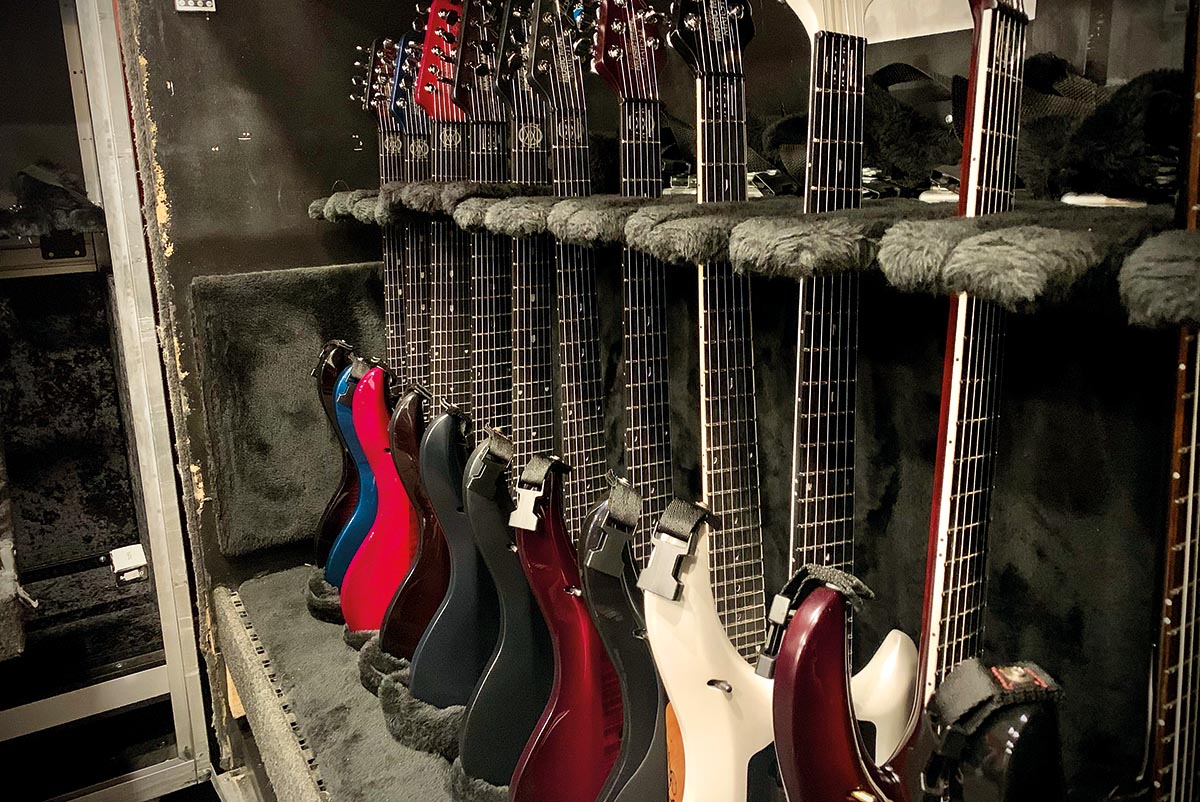
How did you come to choose this gear?
Virtually all of the gear in this studio has been chosen by Dream Theater engineer James “Jimmy T” Meslin.
Do you have a favorite piece?
The RND Shelford channels have proven to be crucial in this setup. They are extremely versatile and the key to capturing great recording tone from multiple instrument sources. Having said that, without my signature guitars and amps, I’d have nothing to capture!
What’s the best thing about your setup?
The space itself is incredible and perfectly conducive to creativity and productivity.
What would you like to change or add?
I’d like to increase the size of studio’s live room and add a more elaborate photo/video studio.
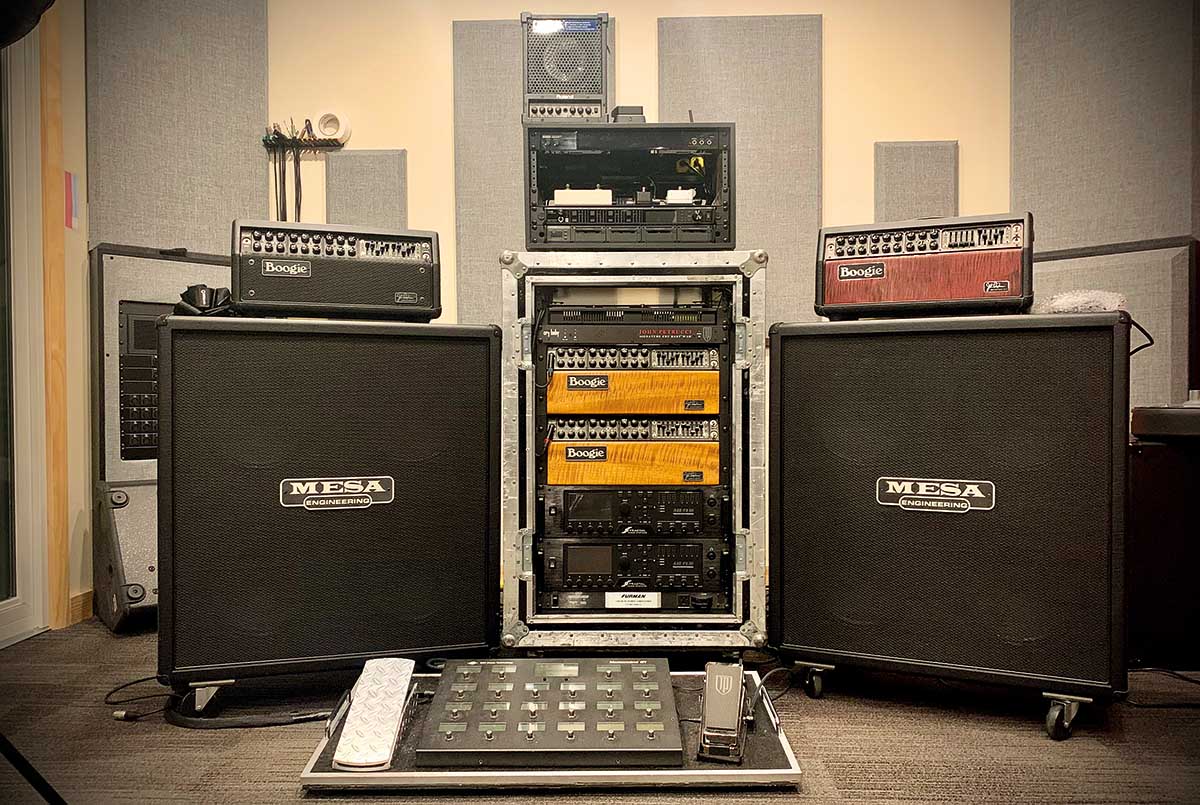

Marty Friedman
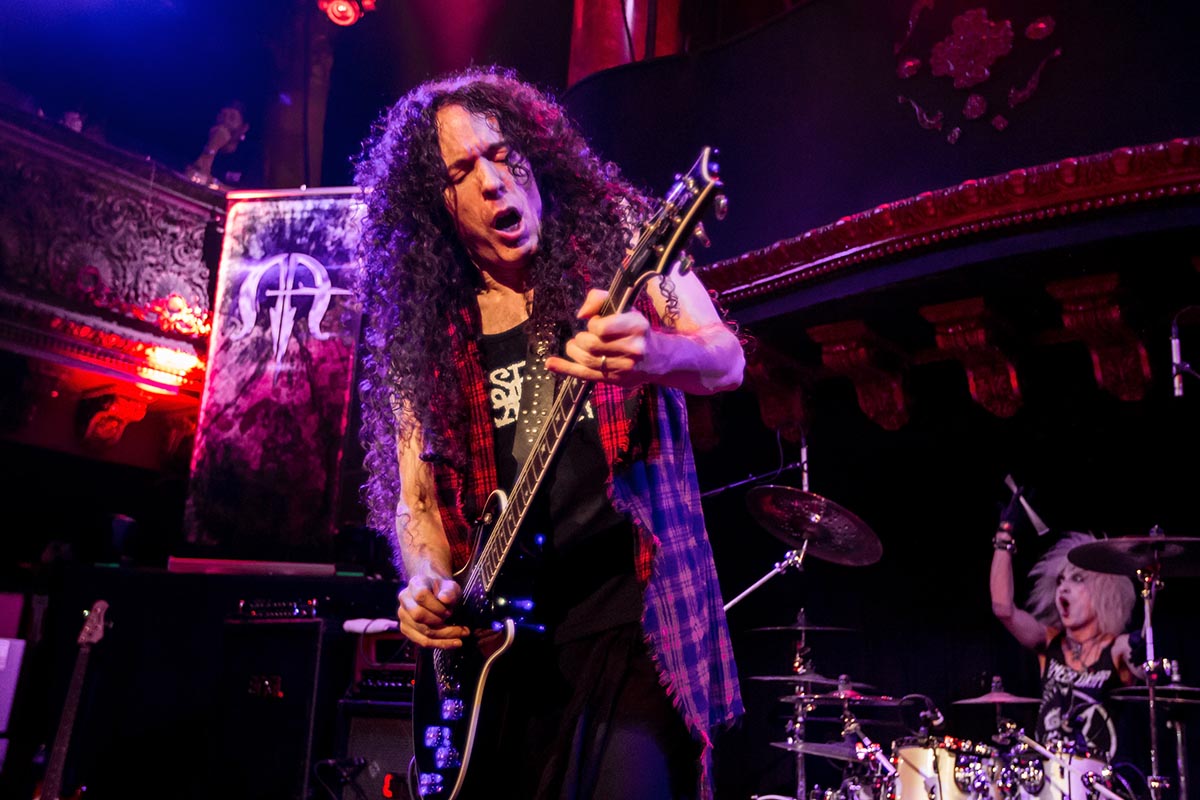
Since 2003, the former Megadeth guitarist has been flourishing in Japan, where he’s just released Tokyo Jukebox 3, the third installment in his series of albums featuring instrumental covers of Japanese songs.
As he explains, his home rig plays a crucial role in helping him develop his ideas and performance before he records the tracks in earnest.
What’s your home rig’s main purpose?
It’s strictly for pre-production purposes. Its the simplest, barest-bones setup, but it has all that’s necessary for laying down ideas or tracking and editing demos.
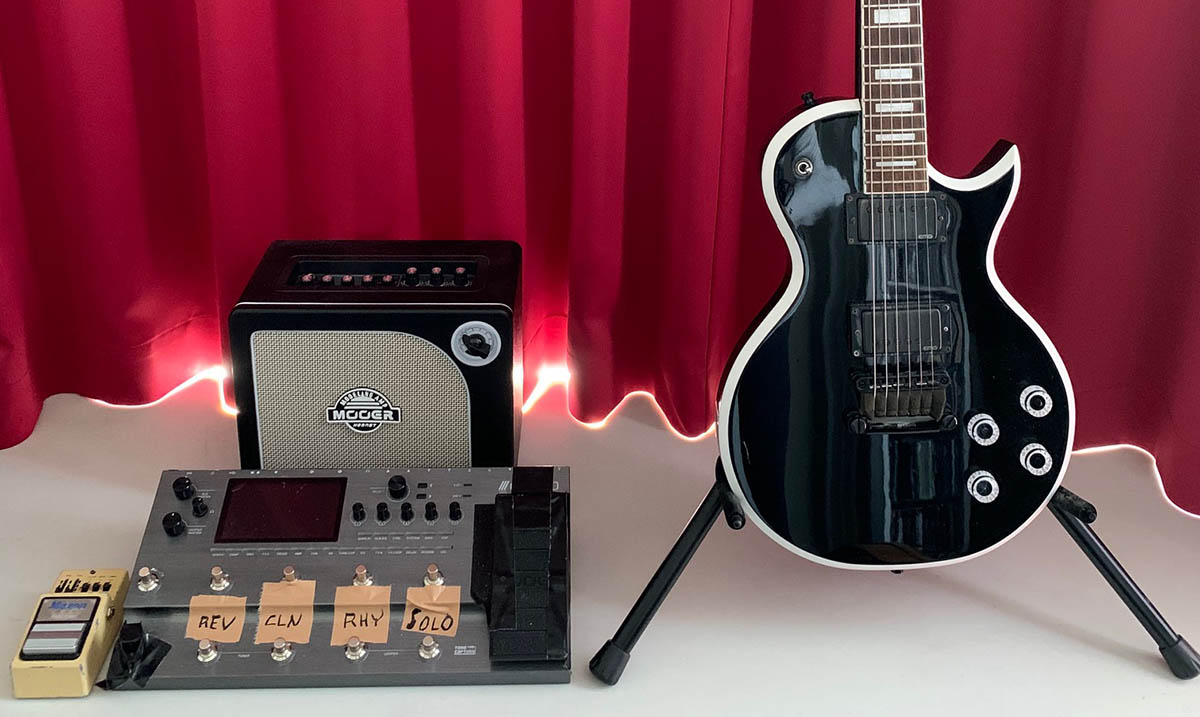
What’s in it?
A MacBook Pro, GarageBand, Blackstar Fly speakers, Korg microKEY air; IK Multimedia AXE I/O interface, AmpliTube 5 and Modo Drum; Mooer GE300 amp-modeling processor and Hornet digital-modeling combo, Maxon Auto Filter, my Jackson MF-1, and a few other guitars and basses.
How did you come to choose this gear?
The simplest easy-to-use, good-sounding gear is all I care about in the demo process, so that’s what I try to choose.
What’s the latest addition to it?
AmpliTube 5. Sonically, I think it’s much better than 4, and that was super already.
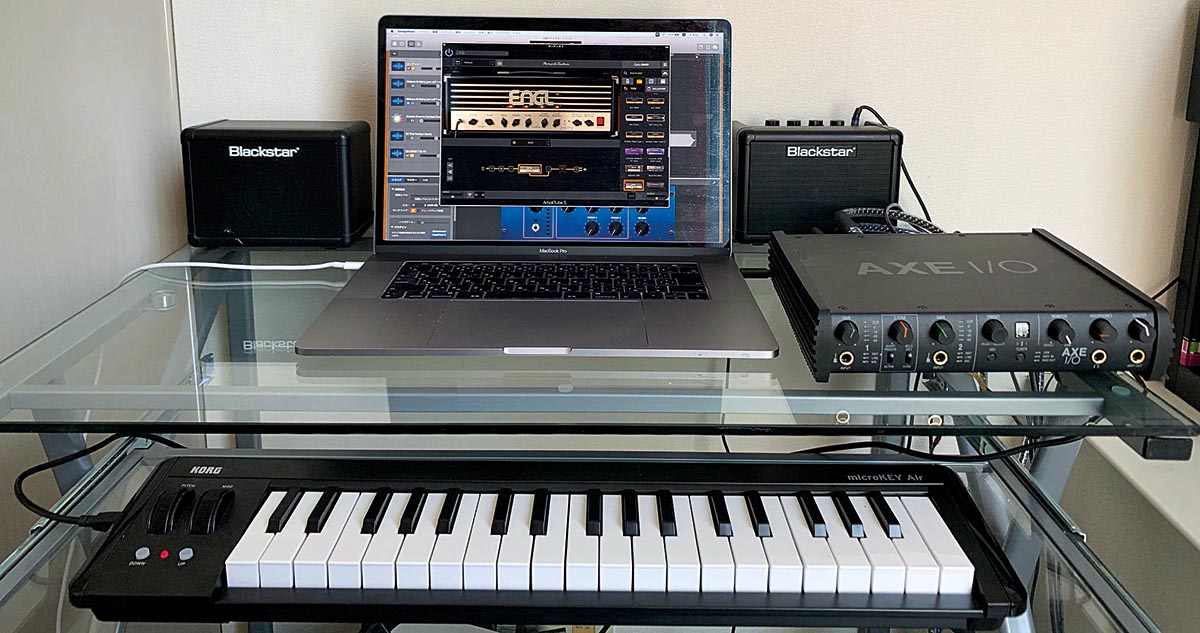
What’s the best thing about your rig?
When I’m playing, writing, recording, or performing, I don’t want to think about anything other than the content of the music. This is especially true at the idea stage and the demo process, which is what I use this rig for.
I don’t need lots of tonal options at this stage. If I have an idea, I press “record,” and it’s done. Occasionally, I’ll fall in love with some lucky mojo that happened on a phrase from one of my home demos, and I’ll slip it into a recording, but that’s rare.
One good thing about working this way is that, before actual tracking, I’ll have recorded many demos, in every structure, tempo, and key imaginable. So by the time I’m doing the real recording, I’ve decided exactly what I want to do, and I know the material so well that the focus of the actual recording session is purely a performance of material that I am very comfortable with, thanks to having done all the home demos.
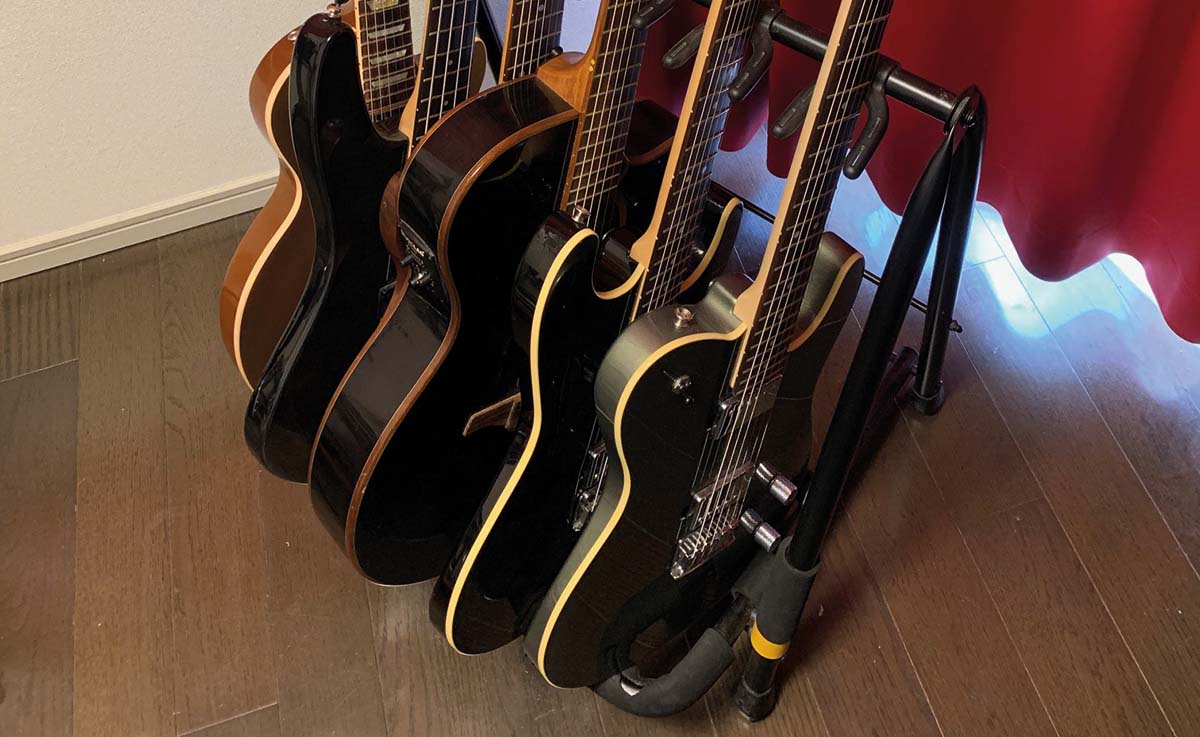
Sonny Landreth

The slide guitar wizard has been called the King of Slydeco for the zydeco influence that runs through his work.
Combining right-hand techniques of picking, tapping, and slapping, with left-hand moves like fretting behind the slide, Landreth is a virtuoso like no other. Here’s what he uses to keep in practice, write songs, and make demos.
What’s your home rig’s main purpose?
It’s my little one-stop, multifunction station for practicing, fleshing-out songs, trying out new gear, and recording tracks that’ll help jumpstart the next album in a real studio with my engineer, Tony Daigle. It also gives me an off-the-clock, stress-free way to work on other artists’ projects, too.
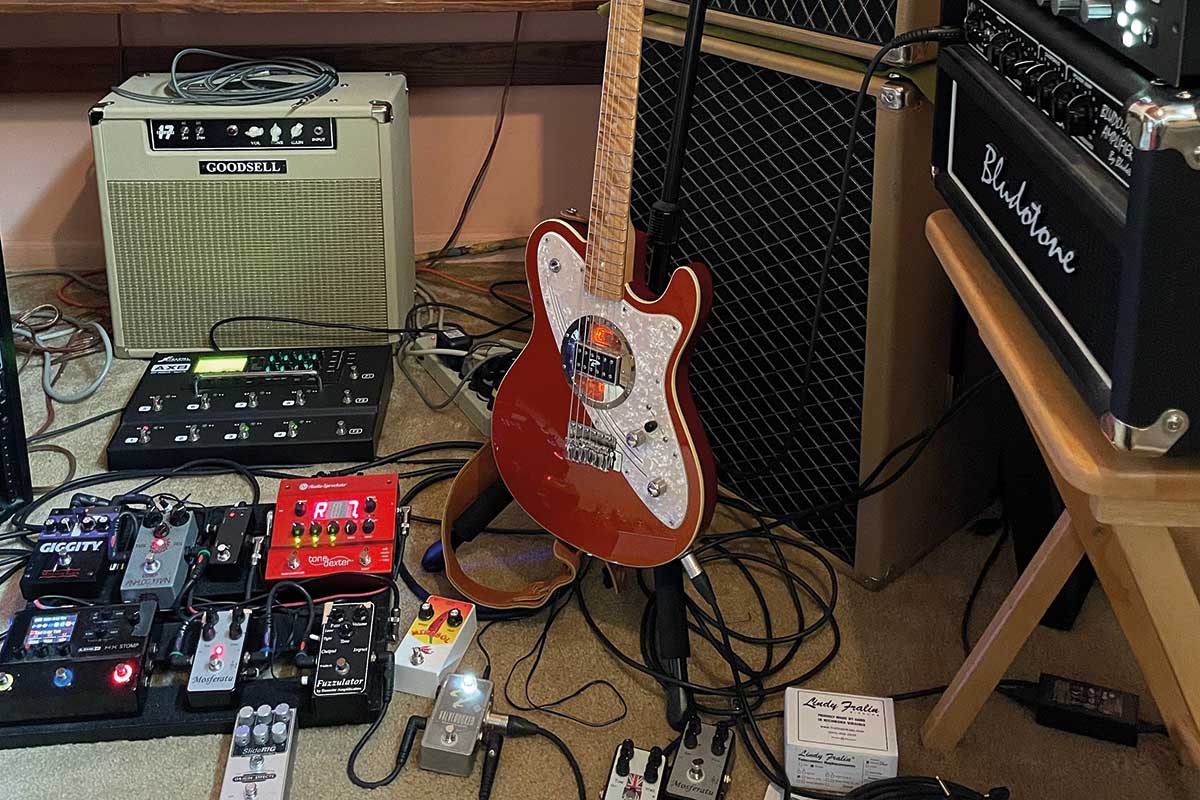
What’s in it?
Though I keep a lot of gear handy, I basically start with the same tried-and-true drive section on my pedalboard that I use onstage: guitar signal into a Demeter Fuzzulator for boosting solos, then to a Hermida Mosferatu, Analog Man Comp, and Voodoo Lab Giggity preamp/EQ pedal combination.
From there I go into whichever of my amp heads I wanna use with a Universal Audio OX Amp Top Box or a Dumble 2x12 cab, depending on which neighbors are home. Or I’ll change things up with a profile I’ve tweaked to as near the quantum level as I can get. Kemper, Fractal Audio, or Line 6 – they’re all ridiculously good.
Next in line is my mic pre and EQ before hitting a Demeter VTCL-2 tube comp/limiter in front of the iMac. Monitoring the whole shebang is an ART SLA-1 power amp that fires up a pair of Yamaha NS-10 speakers. I’m still running an earlier version of ProTools with a Digidesign Command 8 controller. Works for me and still more than good enough to make the cut sonically.
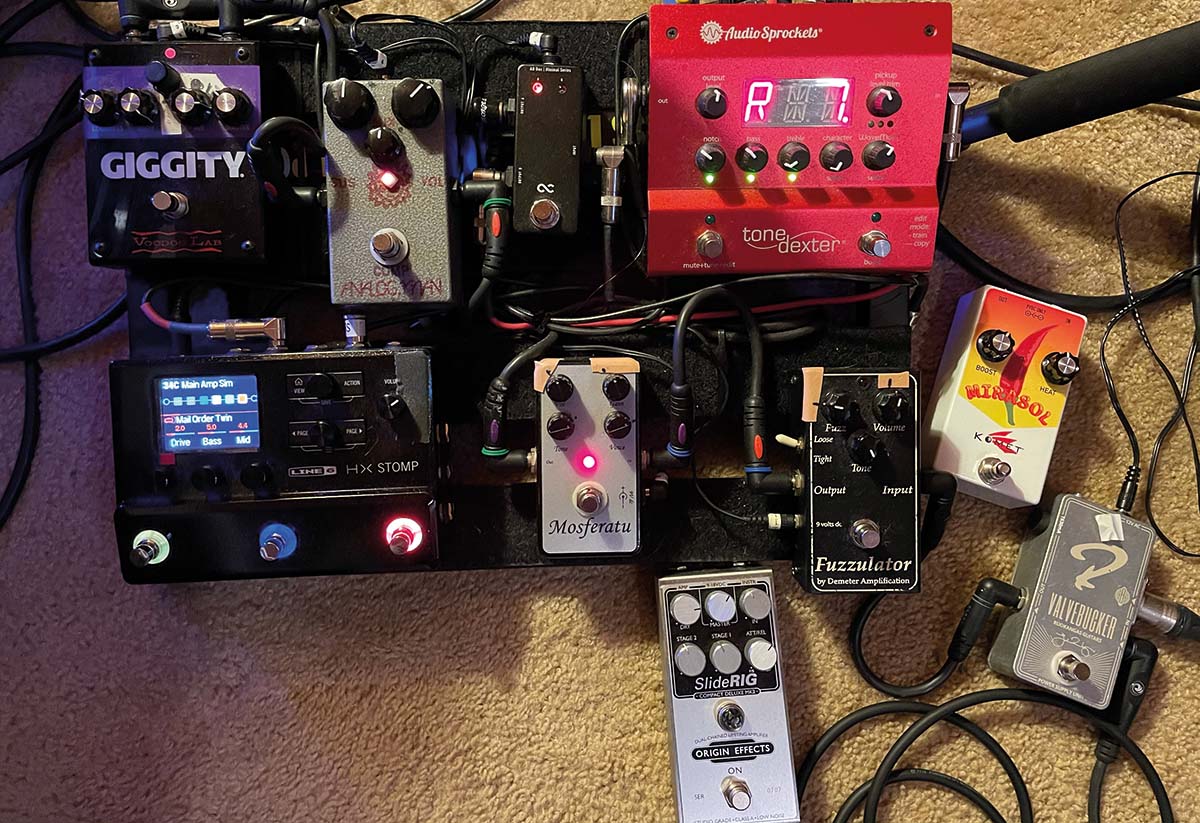
How did you come to choose this gear?
Oh, man, lots of trial and error. And I’ve been lucky. All the years in studios and on the road exposed me to a lot of stuff and gave me the opportunities to discover and experiment with it all. The main thing for me is that each piece of gear in the chain – pickups, pedals, outboard gear, whatever – has to make a difference and contribute directly to the best sound I can get
Do you have a favorite piece?
That would be the vintage API lunchbox that the late, great Brent Averill put together for me back in 1994. It has two 312 mic cards and two 550A EQs. My producer, R.S. Field, turned me on to him and API way back then, and it’s been a blessing. I think anything sounds great through it, but I’ve always found the midrange clarity and chime it gives my electric guitars to be extra special.
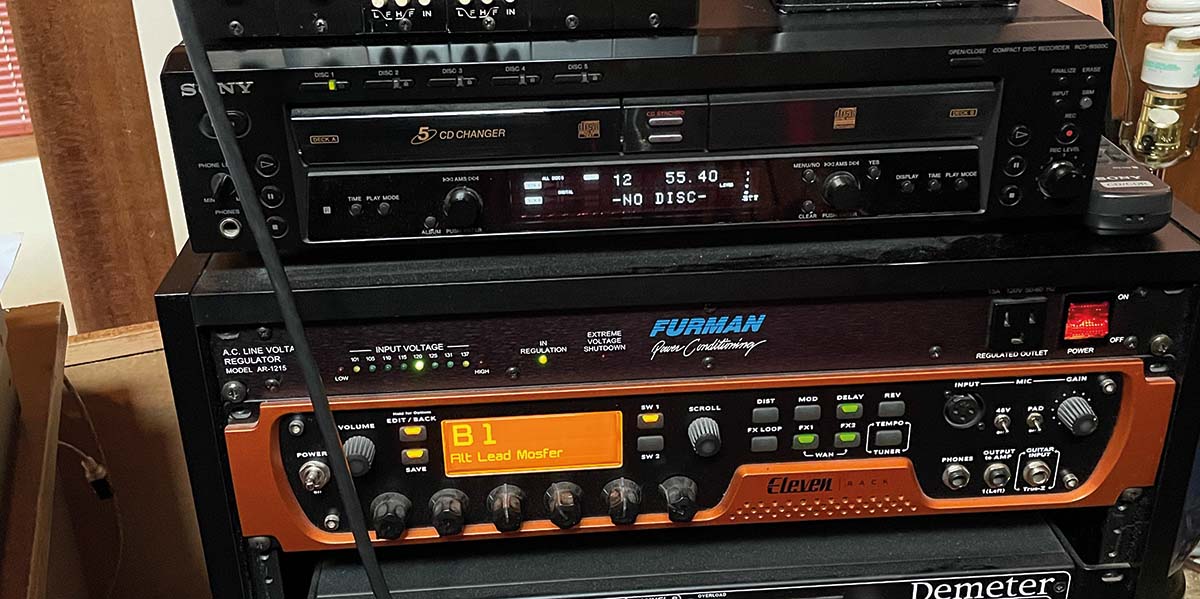
What’s the latest addition to your home setup?
I recently got the compact version of the SlideRIG dual-comp pedal from Origin Effects. That’s really cool, and I used it for a track on Dion DiMucci’s new album in the works.
What’s the best thing about your home rig?
Accessibility. It’s literally part of my bedroom in a loft, so, for better and for worse, it’s right there.
What would you like to change or add?
I’ll eventually have to upgrade to a new computer, but I’m in no rush. Otherwise – and I can’t believe I’m saying this – I’m really happy with what I have. But there’s always something else around the corner to check out. That’s part of the fun... and the torture.
Guitar Player is the world’s most comprehensive, trusted and insightful guitar publication for passionate guitarists and active musicians of all ages. Guitar Player magazine is published 13 times a year in print and digital formats. The magazine was established in 1967 and is the world's oldest guitar magazine. When "Guitar Player Staff" is credited as the author, it's usually because more than one author on the team has created the story.
